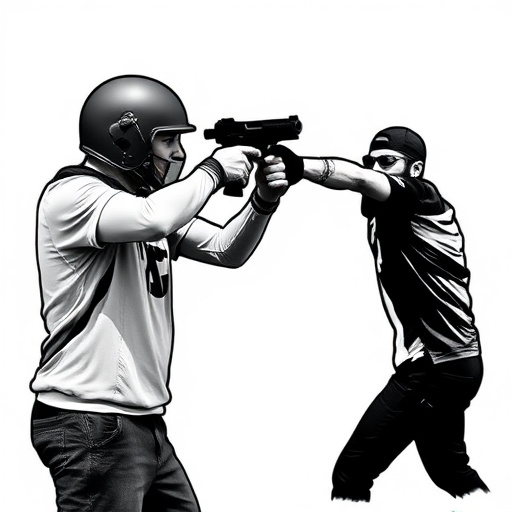Pepper spray is an effective non-lethal defense against dogs, disrupting their sensory perception with capsaicin. Breed, size, and aggression level vary responses. Choosing right formula, understanding legal implications, and proper application techniques are crucial for successful Pepper Spray Defense Against Dogs. Safety protocols include local regulations, training, and maintaining current knowledge of spray properties.
“Maximize your safety with our comprehensive guide to Pepper Spray Defense Against Dogs. Understand the dynamics of pepper spray’s impact on canines, learn expert tips for effective usage, and explore crucial legal considerations. Discover how to choose the right spray, employ strategic techniques, and adhere to safety protocols while defending against aggressive dogs. Stay prepared and confident with this essential resource for personal protection.”
- Understanding Pepper Spray Dynamics Against Dogs
- Choosing and Using Pepper Spray Effectively for Dog Defense
- Legal Considerations and Safety Protocols for Pepper Spray Use
Understanding Pepper Spray Dynamics Against Dogs
Pepper spray, a non-lethal self-defense tool, has proven effective in deterring potential threats, including dogs. When deployed against canines, pepper spray creates a complex dynamic. The key active ingredient, capsaicin, disrupts the dog’s sensory perception by binding to receptor sites in the nose and eyes, leading to temporary blindness and respiratory distress. This disruption can incapacitate an aggressive dog, providing time for the user to escape or seek help.
However, understanding pepper spray dynamics against dogs is crucial. Factors such as breed, size, and aggression level influence a dog’s response. Smaller breeds may experience quicker effects due to higher surface-to-volume ratios, while larger breeds might require more concentrated doses. Additionally, trained service dogs or those with protective instincts may display enhanced resistance, necessitating stronger formulations or strategic application techniques for maximum effectiveness in Pepper Spray Defense Against Dogs.
Choosing and Using Pepper Spray Effectively for Dog Defense
Choosing the right pepper spray for dog defense is a crucial step in ensuring its effectiveness. Look for a product specifically designed to deter dogs, as these typically have higher concentrations and special formulations that disrupt canine senses. Check the range and strength; for outdoor use or larger dogs, opt for a spray with a longer reach and stronger active ingredients. Always consider the legal implications and local regulations regarding pepper spray ownership and usage.
When using pepper spray against an attacking dog, remember to aim for the eyes and face. Keep a safe distance and activate the spray briefly, allowing the wind to carry it towards the animal. Do not aim directly at its nostrils or mouth, as this may cause respiratory distress. After deployment, give the dog space and wait for the effects to wear off before approaching. Regularly practice your usage to ensure confidence and precision in real-life scenarios.
Legal Considerations and Safety Protocols for Pepper Spray Use
When considering a pepper spray defense against dogs, it’s crucial to understand the legal considerations surrounding its use. Each jurisdiction has specific laws and regulations dictating when and how pepper spray can be deployed, particularly against animals. Before employing this method, individuals should consult local statutes to ensure compliance. For instance, some areas require permits or registration for ownership and possession of pepper spray, while others have restrictions based on animal species or size.
Safety protocols are paramount when using pepper spray, especially in scenarios involving dogs. Users must be trained and authorized to deploy the spray responsibly. This includes ensuring a safe distance from both the dog and bystanders, as pepper spray can cause temporary blindness, breathing difficulties, and pain. Proper application techniques should be learned to maximize effectiveness while minimizing harm. Regular maintenance and understanding of spray ranges and expiration dates are also critical components of safe pepper spray use.
In conclusion, understanding the dynamics of pepper spray against dogs, selecting the right product, and adhering to legal and safety protocols are essential components of a robust defense strategy. By arming yourself with knowledge and the appropriate tools, you can effectively deter and manage dog encounters, ensuring your safety and peace of mind in various environments. Maximizing your pepper spray defense against dogs is about preparation, responsibility, and staying one step ahead in potentially dangerous situations.
